| Recently a number of us were lucky enough to fly over to the Bay Area Maker Faire to represent Raspberry Pi at the event. For those who haven’t managed to make it to one before, these are festivals on a grand scale of all things craft, electronics, tech, and general making with the Bay Area Maker Faire being one of the largest. It had quadcopter fighting, a fire breathing metal octopus (yes, really), cupcake cars, robotics and cool projects from every corner of the maker community. Clive, Carrie Anne, myself, and the folks from Pimoroni spent a lot of time at the stand talking to Raspberry Pi fans one on one though in this post we’re highlighting some of the awesome Pi-based projects we managed to see on our visit. Our stand proved very popular not least because of the super fashionable Raspberry Pi branded tote bags and tradable resource cards we brought along to give out. For a taste of what a Maker Faire is like, look no further than Carrie Anne’s montage for Geek Gurl Diaries: One of my personal favourite projects was Mugbot, a social robotics creation from Seita Koike at Tokyo City University. It’s amazing how emotive this little fellow can be with just a few servos and some LEDs to express itself. It quite convincingly pulls off sad, happy, and angry among other emotions. Another exciting project was the Argus geodesic 3D scanner by Shannon Hoover. This is a dome which features 35 Raspberry Pi, using a Raspberry Pi and a Pi camera on each hub along with a custom board for LED lighting. Argus is used to take a picture of someone from all angles which can then be stitched into a full 3D model. You can see it in action in Carrie Anne’s montage. Right now the metal bars need to be bent, though the project creator is looking at using custom hubs (either 3d printed or eventually injection moulded) so that standard low cost metal tubes can be used. Although Raspberry Pi was created with educational goals, it always pleases us to see it used as a prototyping platform or embedded in commercial products. One such project was Cultivar, which uses a Raspberry Pi, a high quality moisture sensor (capacitive as opposed to resistive), a USB WiFi dongle, a solenoid, and a whole bunch of neat software to enable your to observe and automate plant irrigation through a pretty web UI. The project aims to offer intelligent algorithms for water control to, for instance, give different amounts of water at different stages in the plant’s lifecycle while also taking environmental conditions into account. We were pleased to see such a large number of young makers at the event (in fact, there was a whole hall dedicated just to Young Makers and their projects). We met some inspiring young people there – I’m tempted to pick up electric guitar playing just so I can use QV’s modular guitar design. Julian, Zach, Will, Cameran, Arjun, Mark and Dylan from Pleasanton, California told me all about their ‘Robot Pi’ project which consists of a Raspberry Pi-powered robot, the maze they had constructed, and a Python-based web server which allows you to control the robot through the maze and view the maze from the perspective of the robot’s camera. In the picture below the robot is tethered to its remote, though this is just as the team found there was too much interference in this electrically noisy environment. The Robot Pi team are a bunch of friends who wanted to pursue electronics in their free time, and were able to put on their stand thanks to a successful crowdfunding effort. Another young maker project we really enjoyed was the Cootie Catcher Choir by Zander Roe and Brian Roe pictured below. Carrie Anne interviewed Zander about his work, who explained to us how he uses an Adafruit 16-channel servo driver breakout board to drive the servos connected to gears at the back of the cootie catcher wall. It may not be clear from the pictures, but it works by pressing a button on the project’s web interface to cause one of the mouths to open and emit a note of a certain pitch. We were excited to see so many awesome projects using the Raspberry Pi in some way at the Maker Faire and really enjoyed speaking to all the makers about their work. I know there are many, many more we either didn’t see or didn’t manage to write about. If you know of any, please leave a note in the comments. |
A Semi-automated Technology Roundup Provided by Linebaugh Public Library IT Staff | techblog.linebaugh.org
Friday, May 30, 2014
Raspberry Pi projects at the Maker Faire Bay Area
Subscribe to:
Post Comments (Atom)
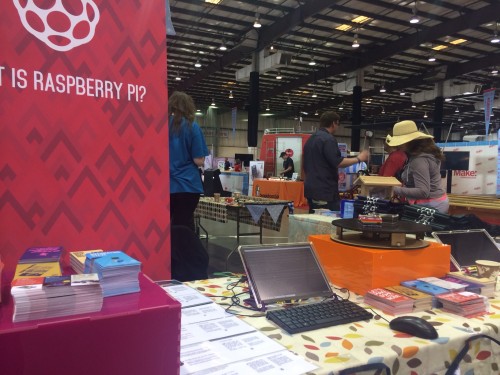
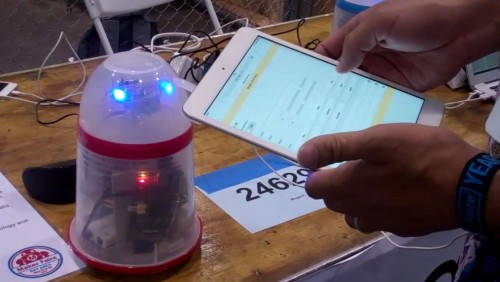
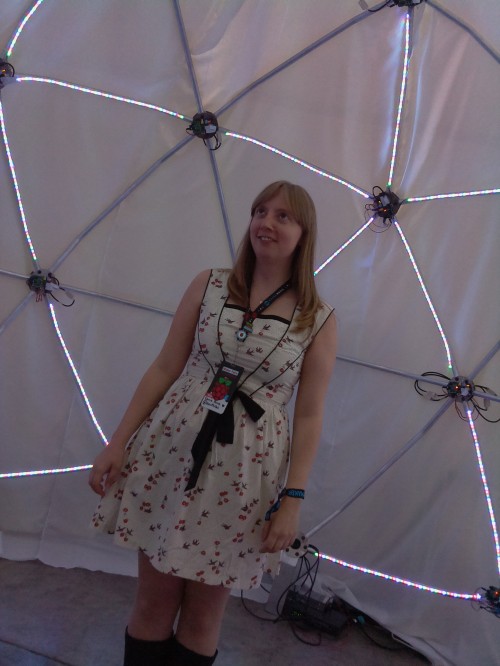
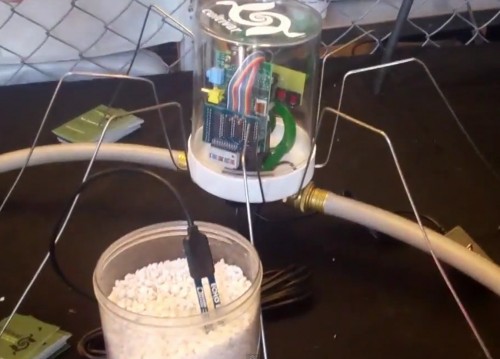
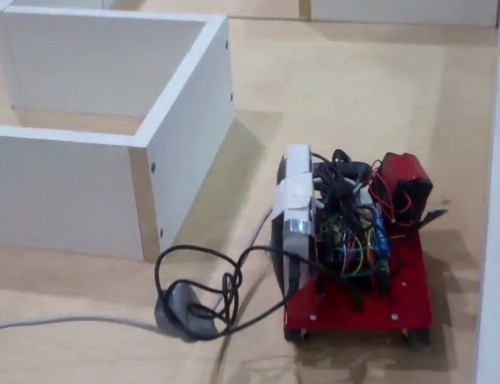
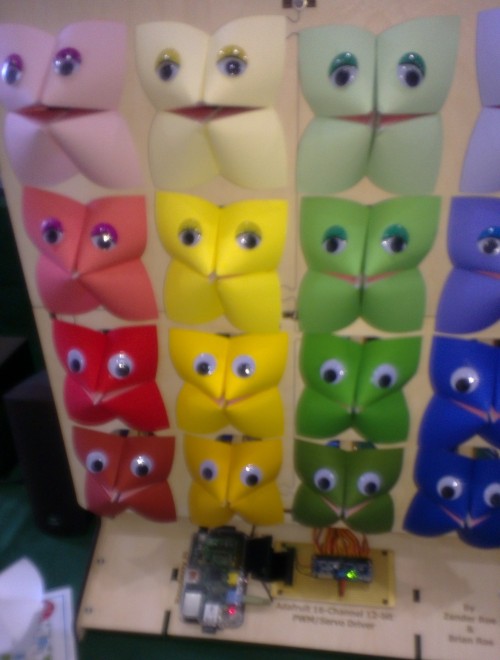
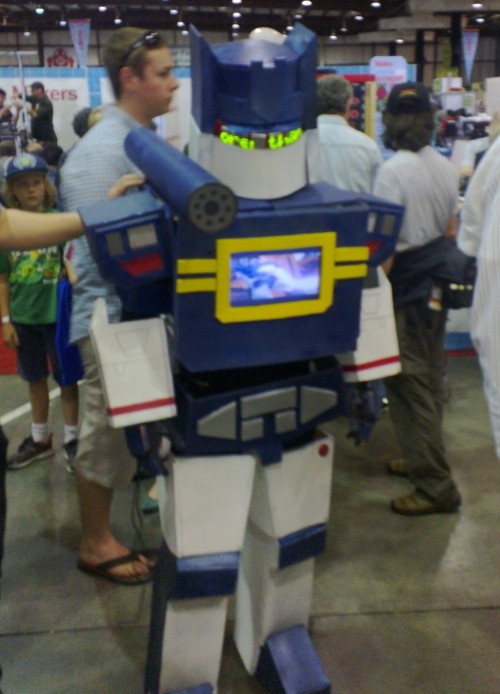
No comments:
Post a Comment